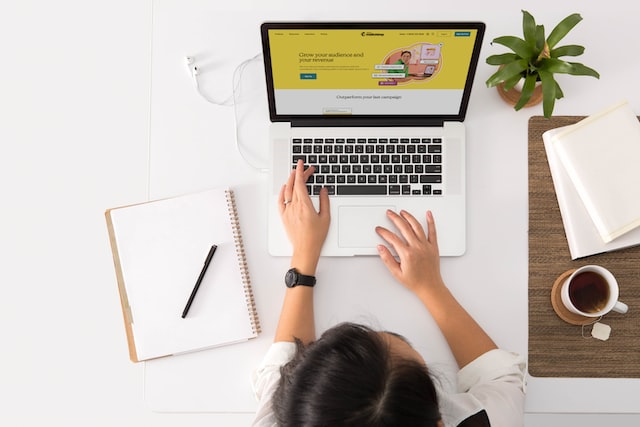
Email is the most valuable digital resource we have today. With it, we carry out work and study tasks, we connect with people around the world and brands use it to promote their products or services. In order for this to operate normally, it is essential to know how to send a newsletter.
Newsletters are emails that are sent regularly by a brand to its subscribers. Through them, the brand remains current in the minds of its potential customers and provides them with information that is beneficial to them and motivates them to continue to be part of its group.
In order to send a newsletter that would help us reach our objectives, there are a series of previous steps that need to be taken progressively. Some of them may take minutes to complete, while others may take days, weeks or months. The important thing is to work with perseverance because it is a very valuable marketing strategy, but sometimes it does not generate immediate results.
The subscribers
This is step 1, where the whole operational cycle begins to reach a database that does produce sales on a regular basis. Subscribers are known as those potential customers who have decided, of their own free will, to belong to the mailing list of a certain brand.
The best way to make this really effective is through a digital giveaway. It works as follows: the brand places a certain resource that it is going to give for free to people who subscribe to its list. For everything to go smoothly, there must be a form where the person registers their details and after confirming everything, the planned gift is sent to them.
This data (usually name and email address) is stored in the chosen email marketing software. Thanks to the potential that these offer, the list of subscribers can later be segmented to send information of interest to those who are most likely to respond positively.
The issue
Once you have your first subscribers, it’s time to get your boots on and say something to them. They are waiting for some communication, and you have to give it to them in the most attractive way possible. The magic of it all starts with the subject line, which should be as engaging, punchy and direct as possible.
Generally speaking, the subject line has only one purpose, and it is perhaps the most important of all emails: to get the person on the other side of the screen to open it and consume the internal content. This sounds easy, but it is really hard to get attention in the face of the amount of emails that flood everyone’s inbox every day.
That’s why you have to follow the four U’s rule: make the subject line unique, urgent, useful and ultra-specific. Although there are 4 U’s, marketing specialists say that if you comply with at least 3 of them, it will be more than enough.
Writing the content of the email
Another of the most dreaded moments in newsletter creation comes when you are faced with the blank page. Before starting any email, doubts almost always arise, such as: What should I write? Will it be interesting? Will it be opened?
The main recommendations for an email to achieve the expected results are that the text should be persuasive, that it should include personalization spaces (for example, that the recipient’s name is mentioned at some point), that it should have an eye-catching design, that there should be links to redirect traffic and that it should include a provocative call to action.
Ideally, start with a story that connects the recipient to the message, gives them something that is useful to them, and continues the journey to whatever it is you are promoting (if that is the objective of the communication).


Selecting the recipients of the message
Although there is a common misconception that everyone is the ideal customer, the reality is that this is not the case. In order to ensure that the email is well received, and delivery statistics are positive, it is essential that what is known as segmentation of the subscriber list is carried out.
That is, choosing a group of users with similar characteristics to give them the content they are most interested in. For example, a person who specializes in web design can have their list segmented into those who want to learn the profession and those who want the service for their own business. They have different objectives, and therefore it is more worthwhile to tell them different things.
This is a time-consuming task, more so at the beginning of list building because it ensures that each user is in the right place. After that, you just need to plan what kind of content to send to each user to complete the journey.
Final details
If all of the above has been done correctly, this point will be very easy to accomplish. What is important here is to check that all the content is correct, that there are no typos or spelling mistakes. It is also important to check that the links work and that the offer is well-structured. A link that does not go to the right place will result in the subscribers’ time and attention being wasted.
To avoid this, it is best to test this by first sending the email to a personal address and reviewing it as if it were a subscriber. It only takes a few minutes to do this, but it is well worth it to avoid irreparable damage.
Finally, you need to send to the entire list you have selected, or schedule if appropriate. Scheduling is often used in cases where you are going to create a funnel or prefer to have everything prepared in advance, which is very worthwhile in order to save time, effort and worry.
By following these 5 simple steps, you will be able to enjoy a functional and attractive newsletter for your subscribers that they will surely take advantage of and give the final use, which is to sell.







